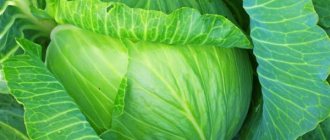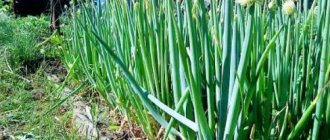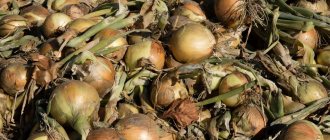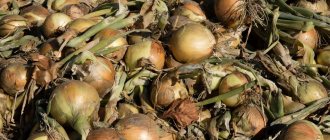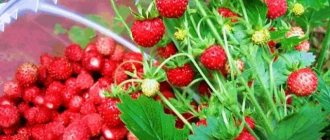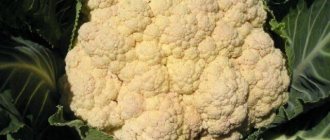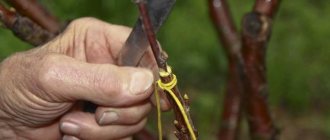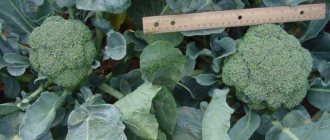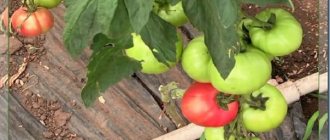Vegetable growing » Onions
0
2635
Article rating
Kira Stoletova
Chalcedony onion is an early ripening and high-yielding variety. It is unpretentious and can grow in any conditions. The plant can be planted with seeds or sets. You can grow onions both for your own needs and for commercial purposes. This variety has been receiving excellent reviews for years.
Onion Chalcedony
Description and characteristics of Chalcedony onion
Chalcedony onions are characterized by good yield, immunity to disease and resistance to adverse weather conditions. The culture can withstand frost and germinates even at 3–5 degrees Celsius. Normally tolerates short-term droughts.
Appearance
Chalcedony onion has a regular rounded shape. The peel is smooth, light brown, dry. The bulbs are large, reaching 15 cm in diameter (weight 120–150 g), the greens are up to 16 cm in height. The feathers have a hollow structure, while the walls are soft, juicy, and the thickness is average. The color is typical bright green.
Ripening time and yield
Chalcedony onion is an early ripening variety: the first harvest can be harvested within 110–120 days after germination
If agricultural techniques are followed, the yield is 7–8 kg per square meter. With industrial cultivation, the figure reaches from 200 to 630 c/ha, which is significantly higher than a number of varieties (for example, Moldavsky, Strigunovsky local).
The product yield on the eve of harvesting is 98%, after ripening in the warehouse, in storage - 100%. Chalcedony onions are suitable for long-term storage (up to 7–8 months) in appropriate conditions: temperature 2–5 degrees, humidity up to 70%, darkening. The bulbs are dense and can be transported over long distances.
Chalcedony onion has the correct shape and large size
Resistance to diseases and pests
The culture is characterized by high resistance to common diseases and pests. However, if the rules of care are violated (excessive watering, growing on depleted, dense soil), it is affected by neck rot (affects the root crop almost completely) and downy mildew (downy mildew).
May also suffer from some insects and worms:
- onion moth, onion fly;
- stem nematode.
Therefore, when growing, timely preventive and treatment measures are required - in this case, the maximum harvest can be harvested.
Composition and properties
Chalcedony onion pulp contains water (82%) and dry substances (18% in total):
- sugars (maltose, sucrose, inulin);
- proteins (including enzymes);
- organic acids (ascorbic, malic, citric);
- pectin;
- glycosides;
- saponins;
- flavonoids;
- phytoncides;
- potassium;
- iron;
- phosphorus;
- sulfur;
- iodine and other trace elements;
The taste of Chalcedony onion is sharp, with sweetish notes and moderate bitterness. The pulp is white, juicy, dense.
Application
The main use of Chalcedony onions is turnips (annual cultivation from seeds). The vegetable is used for all kinds of dishes and preparations. You can also grow chalcedony onions for feathers. Moreover, it is sown not only in spring, but also in autumn (in a heated room, greenhouse) in order to obtain greenery in winter. The crop can be cultivated both for personal consumption and for sale.
Growing regions
Chalcedony onion is officially approved for cultivation in the regions of the North Caucasus, Kuban, as well as in the Lower Volga region. The crop can be cultivated in other regions of Central Russia, including in the middle zone and the Moscow region. Gardeners also grow Chalcedony onions in neighboring countries. It can be found in Belarus and Ukraine.
Fruit characteristics
- Chalcedony - onions.
- The bulbs are round and large. Each weighs about 150 g and reaches 12 cm in diameter.
- The color is light brown with a faint bronze tint.
- The green feather of the onion stretches 16 cm in height. Inside is empty, juicy, with a slight bitterness.
- In cross section, the bulb is white with dense, fleshy and juicy scales.
- Contain vitamins B, C, A, PP, as well as iron, potassium, ascorbic acid.
- The taste is spicy but pleasant.
Advantages and disadvantages
Chalcedony onions are easy to care for and quite productive. In addition, it has a good taste and can be stored for more than six months. Thanks to these and other advantages, the crop is popular among summer residents and farmers.
Chalcedony onion can be grown in different regions of Russia
Pros:
- good yield;
- excellent taste;
- high product yield;
- the bulbs are large and attractive in appearance;
- can be planted both in spring and autumn (before winter);
- the variety is resistant to most diseases and pests;
- can be stored for up to eight months;
- transportable.
Minuses:
- susceptible to peronosporosis, neck rot;
- For lovers of miniature bulbs, Chalcedony onions are not suitable.
Tips and reviews from experienced gardeners
Useful tips will be useful even to experienced vegetable growers .
Nikolay, Krivoy Rog : “Even in the first year of cultivation, I noticed that Chalcedony loves moist soil, but not too wet. After the summer rains, when the bulbs were already gaining mass, I tried to loosen the soil on the bulb ridge immediately after the rain. Thus, the moisture was retained longer, and the harvest was pleased with large and high-quality bulbs.”
Lyubov, Chernigov : “It so happened that my Chalcedony was attacked by tobacco thrips. The next year, I decided to calcine the sets at a temperature of +40°C in an oven. For two days I warmed the heads for 5 minutes, and when it was time to plant the onions in the ground, I planted them. Since then, my Chalcedony has not known this pest.”
Reviews of the variety , which has captivated the country's gardeners for more than 25 years, confirm its advantages.
Tamara, Stavropol : “I like onions for their ease of care and rapid ripening.
If you follow simple rules for growing and harvesting, this variety of vegetable will remain almost completely until spring. Starting in summer, we also harvest green feathers for the winter. I freeze it in the freezer, and in winter I add it to soups and salads.” Ivan, Kirov : “Chalcedony is stored well and does not rot. I collect very large heads even in a lean year. I also like its taste - sharp, but pleasant. Our family loves salads with it, especially in winter, when the body requires vitamin C. I first planted Chalcedony onions through seedlings, now I decided to try growing them from seeds (nigella).”
Landing dates
The planting time depends on the method of cultivation and climatic characteristics of the region:
- Seeds for seedlings are planted from the end of February to the first ten days of March;
- seedlings are transferred to open ground in the second or third ten days of April;
- seeds are sown in open ground in the first half of April;
- The seedlings are placed in open ground at the end of March.
Attention! When planting Chalcedony onions, they are guided by the lunar calendar, as well as the weather forecast. In the Urals and Siberia, the deadlines are shifted by 1–2 weeks.
Features of agricultural technology
However, there are several factors that will need to be taken into account. The quantity of the harvest will directly depend on this, but also, naturally, its quality.
The area where Chalcedony onions will be planted should be located in a sunny place - the bulbs will fill with juice faster, especially with good watering. Also, the garden must certainly contain light loam or sandy loam soils of high fertility. If you define soil by acidity, then it should be slightly alkaline. Try to regularly fertilize the soil with proven folk methods such as ash, dolomite flour and fluff lime. In the fall, it is advisable to generously cover the ground with rotted manure - in terms of its qualities, this will be the best feeding. And one more thing - the soil in which Chalcedony will be planted must have a four-year rest from the last planting of onions. Ideal for preparing the soil would be peas and pumpkins planted under onions the day before.
Methods for planting Chalcedony onions
Chalcedony onion is a universal crop that can be cultivated in the following ways:
- Seeds for seedlings - for greens and onions (an annual crop).
- Set in open ground - for greens and large bulbs (annual crop).
- Seeds and sets in open ground in a two-year cycle - to obtain feathers and root crops.
- Seeds into a heated greenhouse in the fall (as an annual) - for forcing greenery in the winter months.
Growing seedlings from seeds
Seeds are purchased from trusted suppliers and seedlings are grown at home. The soil can be prepared in advance, for example, turf soil with black peat, humus and sand in a ratio of 2:1:1:1, or you can buy a mixture in a store. They are sown from the end of February to mid-March in such a way as to transfer the seedlings to the garden bed 1.5 months after germination.
Seeds for seedlings are sown in early spring
When planting onions, Chalcedony acts as follows:
- Soak the seed in a weak solution of potassium permanganate for half an hour.
- Place in a bowl of warm water.
- Allow to dry and treat with Epin or another growth stimulant.
- Wrap in damp gauze, place on a flat dish, water periodically and allow to germinate for a week.
- Transplant into pots (3-4 seeds each) at a shallow depth (up to 5 mm).
- Moisten the soil, cover the container with film and grow at a temperature of 23–25 degrees.
- As soon as the shoots appear, the film is removed, and the temperature is lowered to 16–18 degrees, and if necessary, illuminated with a lamp.
- Two weeks before transplantation, they are hardened at a temperature of 8–12 degrees.
- They are transplanted into open ground according to the 25*25 cm pattern.
Sowing seeds in open ground
With a two-year growing cycle, Chalcedony onion seeds can be immediately planted in open ground. They are prepared in the same way as in the case of seedlings. The beds for Chalcedony onions are formed in advance - they need to be dug up and fertilized, then several furrows with a depth of at least 3 cm are marked at intervals of 20 cm. Sand is poured onto the bottom, then the seeds are distributed at a distance of 3 cm. Sprinkled with soil and given a little water. At the end of August the greens will turn yellow and small bulbs will begin to form. The sets are collected and stored until next spring, and then sown in open ground, as described below.
Planting seedlings in spring
Growing Chalcedony onion sets is much easier, since you do not need to work with seedlings. The instructions are as follows:
- Only dense, beautiful bulbs are selected.
- Warm up for 10 hours (temperature 40 degrees).
- Pickled in a warm solution of any fungicide.
- Dry at room temperature, laying on the surface in one layer.
- Prepare the area in advance (clean, dig, fertilize).
- Make several furrows 3–4 cm deep at a distance of 25 cm.
- Place Chalcedony onion sets with their bottoms down at intervals of 6–7 cm.
- Sprinkle with soil and water a little.
Attention! If planting is done before winter, the beds must be mulched. For this purpose, sawdust, straw, pine needles and other natural materials are used.
Sets are placed to a depth of no more than 4 cm
Is it possible to plant Chalcedony onions before winter?
Gardeners plant Chalcedony onions before winter. Planting of seeds begins from the end of October to the first half of November. It can be grown in a heated greenhouse or other room. The purpose of pre-winter planting is to obtain fresh greenery throughout the winter and early spring.
Important! For autumn planting, you can also use seedlings. In this case, it is better to choose the smallest onions (no more than 1 cm in diameter). They will have time to produce green shoots before the first frost.
Harvest and storage
The optimal time for harvesting ripe onions is from late July to mid-September , three months after planting.
How and when to collect
Readiness for harvesting will be shown by the following signs::
- the bulb head has acquired a copper-brown color;
- the neck of the feather began to dry out and become thinner;
- almost all the feathers have dried out and turned yellow;
- stems spread along the ground.
In dry weather in summer, it is advisable to immediately after harvesting put the bulbs out to dry in the sun for a week. Then you should put them under a shed to ripen for a few more days and only after that take them to the basement or barn for storage.
Important! After harvesting from the garden bed, the green feather of the bulbs is cut off, leaving a stump of 3 cm.
Storage features and keeping quality of the variety
The preservation of the bulbs depends on many reasons, but generally this vegetable tolerates winter well . To keep the bulbous heads as long as possible, the following rules must be followed:
- They should be stored dried or completely dried. Do not put the bulbs in thick plastic bags - a greenhouse effect will appear and bacteria will develop. An old proven method is to braid the bulbous stems and hang them up.
- Before storing, you must carefully inspect the vegetables and discard damaged ones.
- In city apartments, the storage place for vegetables is a loggia, pantry, or balcony. The main thing is that dry air circulates in the room where the onions are stored, the humidity is no higher than 50-75%, the temperature does not rise above +25°C and does not fall below -5°C.
Chalcedony onion care
Chalcedony onion is undemanding to growing conditions. Basic cultivation rules:
- Watering is moderate - the top layer should have time to dry.
- Feeding twice a season: organic matter or complex mineral fertilizer for young seedlings (feather height 8–10 cm), three weeks later give potassium fertilizer (30 g per 1 m2), superphosphate (40 g per 1 m2) and urea (20 g per 1 m2).
- The soil is periodically loosened and weeded.
Attention! Chalcedony plantings are regularly inspected and, if necessary, treated against pests and diseases.
Preparing a bed for onions
Chalcedony onions are not too fancy. It grows best on fertilized soil after zucchini, pumpkin, tomatoes, potatoes, cucumbers, and cabbage. You should not plant it after garlic, carrots, or corn. Also, you cannot plant a crop twice in the same place. The planting site is chosen on a hill so that the water does not stagnate; the onion does not like waterlogging.
The bed needs to be prepared in the fall. The soil is dug well, weeds are removed and fertilizers are applied. It is best to dig in compost or humus, 3-4 buckets per 1 m of bed. In the spring, a few days before planting, the soil can be re-fertilized. To do this enter:
- Humus - 2-3 buckets.
- Superphosphate - 20-30 g.
- Wood ash - 1 cup.
If you plan to grow onions for forcing feathers, you need to add saltpeter to the soil. The bed is made high; it is best to raise it 15-20 cm above ground level. In wetlands, the height is made up to 25 cm. After applying fertilizers, the soil is dug up well, the roots and stems of weeds are removed, then the soil is fluffed up, and watered if necessary.
Disease and pest control
Fungal diseases and neck rot of onions most often affect the crop against the background of excessive moisture. Therefore, the main measures of prevention and treatment are:
- planting in an open, sunny area;
- exclusion of location in the lowlands (preferably on a hill);
- compliance with watering norms;
- when signs of damage appear, treat with Bordeaux mixture, Fitosporin, Fundazol or other fungicides.
Insects and other pests are fought with traditional methods (decoction of marigold flowers, potato or tomato tops, infusion of mustard powder, laundry soap, tobacco dust, wood ash). Special insecticides are also used:
- "Fufanon";
- "Karate";
- "Aktara";
- "Fitoverm";
- "Match";
- "Vertimek" and others.
Attention! Chemical treatments for Chalcedony onions should be used only in extreme cases, since the active substances can accumulate in onion greens. Therefore, it is better to carry out 1-2 treatments with folk remedies.
Onion harvesting
As you can see, it is not difficult to grow Chalcedony onions from seeds or sets. A very important point is harvesting. If you do it incorrectly, the turnips will not be stored well in winter and part of the harvest will be lost. No later than 20 days before the expected collection, you need to stop watering and fertilizing. You should start digging up the bulbs when the feather is completely dry.
The harvest time for the Chalcedony onion variety begins in August. It is best to choose a warm day, without rain. The ideal air temperature is 25°C, but you can remove onions from the garden at lower temperatures. The bulbs are carefully dug up so as not to damage the roots (especially if they are sets), then they are laid out on a litter and dried in the sun. At night, transfer the onions under cover. If the weather is rainy, onions can be dried on the veranda, balcony or attic.
According to the description of the onion, Chalcedony has good keeping quality. It is best to store it in braids. You can carefully trim the ends, put the turnips in paper bags and place them on the bottom shelf of the refrigerator. The Chalcedony onion variety is also well stored in nets, suspended in a dry basement or cool pantry.
Agrotechnics of cultivation and care
Chalcedony onions are grown from seeds, which are immediately sown in open ground, or through seedlings. The first method is more suitable for residents of the southern regions, the second is justified in places with a more severe climate, but can also be used to obtain ultra-early products.
Planting of onion seedlings begins approximately 60 days before placing them in the beds. In terms of time, this is February - March. To do this, prepare shallow containers with drainage, pour fertile soil into it and moisten it a little. After keeping the seeds in a solution of potassium permanganate for about 20 minutes (if you use your own seed), they are sown at an interval of 3-5 cm between rows. Then the seeds are sprinkled with a layer of soil 1.5 cm high and again watered through a strainer or sprayed with a spray bottle. The containers are covered with film to better retain moisture and are not removed until germination.
Good seeds from a trusted manufacturer do not require mandatory pre-sowing preparation. They have a high germination rate and are already treated with a contact fungicide. They are usually buried dry in the ground. But for more active germination of nigella and the appearance of friendly shoots, you can soak the seeds for at least 12 hours in a solution of any growth stimulant.
All care for onion seedlings consists of watering, providing additional lighting if necessary, and 1-2 fertilizing with complex fertilizers containing microelements. The time for planting Chalcedony onion seedlings in the garden is April - May.
Well-lit areas of the garden and fertile, light soil with a lot of nutrients and air are best suited for growing Chalcedony onions. Therefore, in the fall, the beds are well-filled with organic matter (rotted manure) and phosphorus-potassium fertilizers are applied. The soil is dug up deeply.
Sowing Chalcedony onion seeds and planting seedlings begins at a soil temperature of 8-10 °C. In the first case, to obtain the heads, furrows 1-1.5 cm deep are first cut in the garden bed, with a distance of 20-30 cm between them. After sowing the nigella, it is covered with fertile soil, and the area must be well watered. To prevent seeds from being knocked out by water, use fine-mesh nozzles on watering cans and hoses or spinners. When the plants have 2-3 leaves, the plantings are thinned out.
Chalcedony onion seedlings for growing on turnips are planted in beds with the same row spacing as when sowing. The distance between plants is chosen independently - from 8 to 10 cm. Onion seedlings are removed from the containers, the roots and leaves are shortened by a third of the length, after which they are planted in open ground and watered well.
To obtain high yields, this onion needs regular watering, especially during the period of growing green mass and the formation of bulbs. Weeding to remove weeds, as well as loosening the soil between the rows, are also necessary. During the growing season, 3-4 fertilizing is carried out, first with nitrogen and then with phosphorus-potassium fertilizers. Good results in the fall are obtained by using complex preparations with microelements. When growing organic onions, chicken manure, mullein and ash are used. 2-3 weeks before harvesting, stop watering the beds.
Harvesting of Chalcedony begins at the end of July or beginning of August, when the bulbs reach the typical size for the variety, bright thin husks are noticeable, and the tops of the plants lie on the ground and begin to dry. Choose a sunny day for work. The onions are carefully dug out with shovels or pitchforks, and then laid out in 1-2 layers on the garden bed. Let it dry for 3-10 days and cut it off. The bulbs must have a neck 4-6 cm high and the roots are removed. Use scissors, a sharp knife or pruning shears.
Storing Chalcedony onions is no different from usual. It needs a temperature of 0-3˚C (or 18-22˚C), air humidity of 80-85%, good ventilation and darkness. Containers can be small boxes, boxes, nets, etc. In an apartment, the best storage place will be an insulated balcony, in a private house - a cellar.
Every experienced onion grower has a goal to maximize the profitability of growing green onions. One of the tasks is to find and buy the best varieties of onions. The bow on the feather must correspond to the main characteristic; it must be multi-bud or multi-lobed. In the nests of which there are several rudiments. The more rudiments there are in the onion turnip, the higher the percentage of feather yield. Which in turn increases the profitability of this business. I suggest you read the article about multi-bud onions.
Video with a review of some varieties of onions. Watch until the end!
https://youtube.com/watch?v=kpV-kWLP0Tk
Seed preparation and sowing
Sowing time is the last week of February or the beginning of March, since the seedlings should be approximately 60-65 days old when planted. You can prepare soil for seedlings yourself or purchase it in specialized stores. The main thing is that the soil is loose and fertile.
Seed preparation is mandatory, and all the activities mentioned above are carried out here:
- calibration;
- soaking and disinfection;
- germination.
To germinate, nigella is placed in a damp cloth, and as soon as the seeds sprout, they are slightly dried and sown in prepared containers.
Make rows in the soil, place nigella there, sprinkle a little soil on top, and spray with a spray bottle. Then you can cover the drawers with film and put them in a dark place. The optimal temperature regime is up to +22-25ºC.
Usually, the first sprouts of prepared seeds appear on the 7-8th day, and as soon as this happens, the film is removed and the boxes are exposed to light. The temperature is reduced to approximately +18ºC, this will avoid stretching the seedlings.
Features of growing onions
For Sturon onions, planting and care are divided into two annual cycles, since onion varieties are usually grown as biennial crops. Each stage has its own agrotechnical features that should be taken into account when growing.
Growing nigella sets
If you sow nigella in the beds in early spring, by autumn they will be ripened with small onions the size of your little fingernail. Sturon seeds are sown in the last ten days of March - at the latest in early April on beds prepared in the fall.
- Before this, nigella is soaked for several hours in water at room temperature (a stimulant can be added).
- Then they wrap it in a small piece of fabric (you can use gauze) and leave it to germinate for a couple of days.
- The finished seed is sent to a permanent place, not forgetting to loosen it, feed it with urea or mullein, as well as minerals.
You should avoid mainly nitrogenous fertilizers, as onions do not like them. Watering Sturon onions should be moderate to prevent root rot.
How to grow Sturon onion from sets
The seed harvest obtained in the first year becomes planting material for growing crops for food in the new season. Depending on the region, planting can begin at the end of April - the first half of May. The main thing is that the earth warms up well enough. Then even late spring frosts will not be able to harm young shoots.
- To disinfect the soil, you should first spill it with tobacco solution or copper sulfate.
- All Sturon onion sets should be thoroughly sorted.
- Remove rotten and dried onions.
- Then dry and ventilate thoroughly.
- The onions are soaked for several hours (overnight is possible) in a small amount of lukewarm water shortly before planting.
- Each head is placed in the ground without pressing. Otherwise, as the bulbs take root, they will begin to “jump” out of the ground.
- The top of the holes/grooves are sprinkled with pre-prepared humus.
A greater number of waterings occur during the period of germination of Sturon sets, especially when the first green feathers appear
During this period, it is also important to feed the plants with any means to stimulate growth and prevent diseases.
Harvesting the Sturon onion begins only after the feather has completely fallen and dried right on the beds. Then the onion is pulled out of the ground. Cut and lay out in a thin layer in boxes or containers for long-term storage.
Growing methods
The Chalcedony variety is grown from seeds (nigella) or onion sets. It is enough to purchase seeds once, grow the seedlings in the first year, and next season they will produce marketable onions. Next, the gardener plants last year’s mature vegetable for flowering and seeds. The cycle repeats itself year after year.
When to plant in different regions
The crop grows well when, at the beginning of the growing season, it manages to capture more natural moisture from the soil. Therefore, in the North Caucasus and the Lower Volga region, Chalcedony is planted in the second half of March. Ripened onions are harvested after 3 months.
In temperate mid-latitudes, the deadline is delayed by a month. There it is still possible to grow root crops directly in the soil.
In Siberia and the northern regions, the crop is grown and hardened in greenhouses, or at home on window sills. They are transferred to the soil in the second half of May. The harvest is harvested in August.
What is the difference between onions grown from seeds?
Chalcedony onions grown from seeds are different from bulbs grown from sets. Initially, the difference is that you do not have to waste time on the germination of the seed itself, as well as on preserving it until the planting season. Onions that are grown directly from seedlings do not go to waste, but retain their qualities until the onset of the new harvest season.
By comparison: many varieties of onions begin to deteriorate during storage in mid-winter; at best, half of the harvest remains until the spring season. The rest of the onion rots and rots. Also, Chalcedony grown from seedlings becomes a real giant - the bulbs weigh on average up to 120 grams, and from one standard bed you can collect up to 5 kilograms of this golden miracle, by the way, bred by Moldavian vegetable growers.
Seedling method
Before planting in the ground, seeds should be soaked in warm water for 24 hours. To increase germination, you can use a growth stimulator. After soaking, the seeds are treated with an aqueous solution of potassium permanganate and washed with warm water.
The seed can be soaked in a 0.01% boric acid solution. Preparatory work speeds up the emergence of seedlings. The first shoots hatch after 1 week.
Onion seeds for seedlings are sown in February. At the same time, the seeding rate is taken into account based on the needs for crop yield. There are 200 seeds in 1 g of seed. 25 bulbs can be grown per 1 m² during the season.
Reviews from vegetable growers indicate that in order to grow full-fledged seedlings, you need to use nutritious, loose soil. Before planting seeds, the substrate must be disinfected by pouring a hot solution of potassium permanganate and fungicides.
It is convenient to plant onion seeds of the Chalcedony variety in cellular cassettes of 2-3 pieces. at a distance of 1.5 cm from each other. The depth of the bookmark should not exceed 5 mm. After sowing, the containers are moistened with warm water using a sprayer and covered with film until the sprouts hatch.
For normal plant development, it is necessary to maintain a temperature of +16...+18°C during the day, +12°C at night. When growing seedlings on a windowsill, you need to ensure that there is no cold draft from the window.
Seedlings are demanding on lighting conditions. To extend daylight hours to 14-16 hours, it is recommended to use fluorescent lamps. The sprouts need to be watered periodically as the surface layer of soil dries out.
Seedlings are fed with fertilizers at intervals of every 14 days. Humins and complex preparations are used as fertilizing. If the seedlings are overgrown and it is too early to plant them in a permanent place, you can shorten the onion leaves at a distance of 10 cm from the soil surface.
Before planting in a permanent place, the plants are hardened off, containers with seedlings are taken out onto the balcony, gradually increasing the time spent in the air. In April, the onions are transferred to the ground and placed at a distance of 25 cm from each other. The seedlings are buried 3 cm, watered, and mulched with a layer of peat.
An increasing number of gardeners are switching from the traditional scheme of growing onions in two seasons to one year. Moreover, today a large number of honeycombs have appeared that make it possible to grow excellent turnips from nigella. Chalcedony onion is one of these, which is also distinguished by its excellent productivity and keeping quality.
Advantages of the variety
Onions of the Chalcedony variety, the description of which indicates an early ripening period, can be harvested 110 days after emergence. The mass of the bulbs is 120 g, the yield reaches 5-7 kg per 1 m².
This bow is the work of Moldovan breeders. The characteristics of the variety are associated with positive qualities and resistance to low temperatures. Seeds can germinate at temperatures of +3…+5°C. Intensive growth is observed at air temperatures of +18…+20°C.
The scales are brown with a bronze tint. Single-lobed onion, with a pungent taste. The variety is suitable for intensive cultivation technologies, is resistant to diseases, and has a long shelf life (up to 8 months).
How to collect and store onions Family
A signal that the crop is already ripe and should be removed from the ground for further storage is the condition of the leaves. Under no circumstances should you speed up this process yourself, otherwise the bulbs will not be stored for too long.
Harvesting
If the plant was planted in the fall, winter and spring were successful, then the harvest can be harvested in mid-July. If the vegetables were planted in the spring, then the best period for harvesting will be the second half of August.
It is better to remove the onion by hand. After digging it up, it must be placed on the garden bed. Unlike garlic, Semeyka requires ripening, that is, additional exposure to the open sky. As a rule, farmers take another 10 days for this. There is no need to worry about possible rain or the bulb re-sprouting into the ground.
Before putting vegetables in boxes or bags for long-term storage, you need to carry out the so-called manual trimming, that is, manually tear off all excess from the bulb.
Important! It is forbidden to perform circumcision with a sharp object, because this increases the likelihood of infection and rotting of the fetus. In the fresh air, but under a canopy, the onions should remain for several more weeks. When the fruits are well dried, they can be poured into containers and moved to the basement
When the fruits are well dried, they can be poured into containers and moved to the basement
In the fresh air, but under a canopy, the onions should remain for several more weeks. When the fruits are well dry, they can be poured into containers and moved to the basement.
Thus, we can conclude that what kind of Family Onion will grow in the garden bed largely depends on the care and efforts of the owner himself. Humidity and well-prepared soil are the key to a rich harvest, and proper manual harvesting is the main condition for long-term storage.
https://youtube.com/watch?v=h1JgQ_BGmPM
Sowing in the ground in spring and before winter
Nigella onion seeds are planted very early in the spring, even in frozen ground. It would be very prudent on your part to prepare the site in the fall - loosen the soil, level it, mulch with peat, make sure there are no lumps. There is no point in delaying planting - this can lead to late ripening and reduced yield. Usually, when planting nigella onions, the seed is placed to a depth of 1.5-2 cm, but on light soils it is advisable to increase the depth to 3 cm (after all, in this case the top layer can be swept away by the wind), or to roll the soil after planting. The distance between rows should be approximately 20 centimeters. It is worth sowing sparingly so that the seed consumption per 1 m is approximately 80 units if you want to get an annual onion. Immediately after germination, thinning should be done, leaving 2 cm between seedlings, after three weeks you should leave 5-6 cm. By sowing in this way, you will spend more than one and a half grams of nigella per 1 m². If you are calculating sowing for seeding, then it should be quite dense. There is no need to water for some time, as a crust may form, which will hinder germination. Then you need periodic watering and loosening of the top layer of soil, fertilizing is carried out if necessary. The harvest is already harvested at the beginning of September; it must be collected before the first frost.
Sowing before winter is not much different from spring. The bed is prepared in a similar way: leveled, lumps are broken up, and a ball of humus is added on top after sowing. The grooves for nigella are made in the same way and the seedlings are cared for. You should not plant nigella twice in a row in the same place, and it is also not advisable to plant onions after cabbage, potatoes, cucumbers
In winter, you should pay attention to ensuring that the area with nigella is under a layer of snow. Later, when it has gone down, it is advisable to cover the soil again with a two-centimeter layer of humus or peat
Experienced gardeners sow nigella in the fall, because spring onions may not fully ripen by autumn, and, as a result, cannot be stored for a long time in the winter.
Care in the garden
To grow good Chalcedony onions, you will need to not be lazy and take care of the plantings:
- water;
- loosen;
- remove weeds;
- feed.
All events are traditional, there is no need to open any Americas. The variety is unpretentious, but, of course, you shouldn’t completely abandon the onion to the mercy of fate.
So, after each watering (and it is recommended to do it once every 7-10 days), be sure to loosen the soil. This helps to aerate the soil and saturate it with oxygen. In such an environment, the bulbs grow better, and the inner scales become more juicy.
Chalcedony is watered based on the weather, and if the days are hot and dry, watering is done more often. In this case, it is necessary to control the level of soil moisture, avoiding stagnation of water.
The best way to solve the problem of retaining moisture in the soil is mulching. To do this, you can use mown grass, peat (sawdust is not recommended), and if possible, you can use special black non-woven materials.
In the first half of the growing season, Chalcedony can be fed using either bird droppings or mullein. It will be enough to carry out two feedings with an interval of 10-12 days. Later, at the end of July, it is recommended to use special fertilizers - Effecton-O or Agricola for onions and garlic.
If you want to grow a strong and full-fledged turnip, you cannot cut the feather from these plants. For greens, it is better to use onions, which are pulled out during thinning, or to plant seedlings specifically to obtain feathers.
